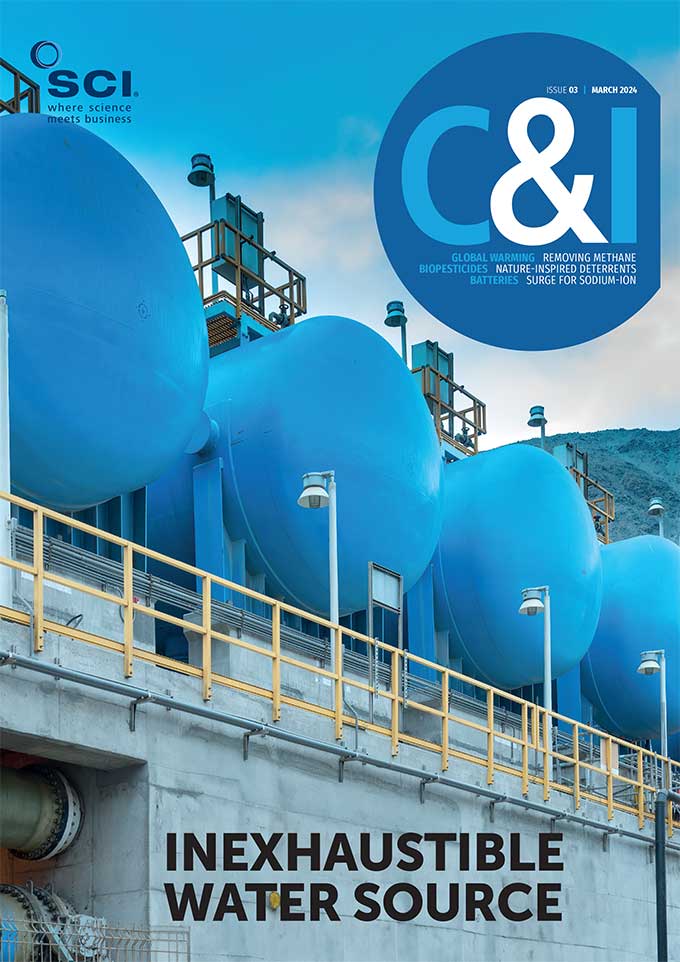BY SIMON FROST | 15 MARCH 2024
US government investment into stimulated hydrogen projects could signal the starting pistol for a new kind of gold rush.
A new frontier in clean energy exploration could be emerging thanks to the developing concept of stimulated hydrogen production, with the US making early moves to establish itself as the global leader in the field.
In February, the US Department of Energy (DoE) announced an initial $20m of funding for 16 projects exploring the development of stimulated hydrogen technologies – methods to accelerate, concentrate, scale and capture the earth’s natural production of hydrogen.
As a low-carbon, clean fuel, hydrogen has long been seen as a key player in meeting net zero targets in the fight against climate change – but methods of producing hydrogen are expensive and often involve fossil fuels, negating its clean benefits.
However, hydrogen is also produced naturally through the interaction of water with iron-rich rocks in a process called serpentinisation. This process is constantly occurring, but the resulting “gold” hydrogen is often dispersed and difficult to extract in significant quantities.
Speaking at the AAAS Annual Meeting in Denver, Colorado, Alexis Templeton, a geomicrobiologist at the University of Colorado Boulder, explained, ‘Iron is the most abundant redox-active element on this planet. We have enormous reservoirs of iron, from [the earth’s] interior to its surface.
‘Everywhere we have iron in the form of iron two plus [Fe2+] that’s stored in different rocks and minerals, if it can get in contact and react with water, under very reducing conditions, it converts the water to hydrogen gas.’
The concept of stimulated hydrogen production seeks to amplify this natural process to make it a viable source of clean energy. Pilot projects are now being planned to test the feasibility of stimulated hydrogen production in real-world settings, with scientists exploring various routes to achieve this.
It will rely, in part, on enhancing fluid flow, as increasing water movement through targeted rock formations can facilitate hydrogen production reactions.
One avenue of research involves the application of controlled mechanical or thermal pressure to rock formations, creating fractures to allow for better water circulation.
It’s likely that accelerating hydrogen production rates will also require the development of new catalysts – be they chemical or even biological. Templeton noted that many microorganisms flourish thanks to natural hydrogen deposits. ‘Hydrogen-rich fluids come up from the deeper environments. They mix with shallower waters from our surface, and they’re so far from a chemical equilibrium that there’s a huge amount of energy available. There are entire communities and microorganisms that are capable of harnessing that energy and growing. Hydrogen is the fuel for them.’
The composition of any fluid used could also be key to the success of stimulated production. One of the projects funded by the US DoE is based at the University of Texas at Austin, where researchers are developing a foam injection approach intended to sweep, capture, and extract clustered hydrogen bubbles from mineral surfaces – an approach that they believe could be more efficient than fluid injection.
It’s not only academic research that is being funded. Koloma Labs, a Denver-based geologic hydrogen company already backed by the likes of Amazon and United Airlines, will now receive $900,000 of DoE funds to explore a combination of geochemical, geomechanical, and fluid transport models, in tandem with investigations into naturally occurring microbiology in hydrogen reservoirs.
‘In the times that I’ve been studying natural hydrogen production on earth, I’ve always been really excited by the fact that it is a continuous process that’s happening on this planet through its entire history,’ Templeton said. It raises the question – why hasn’t the oil and gas industry already found and monetised natural hydrogen deposits in its exploration?
As Geoffrey Ellis, a petroleum geochemist at the US Geological Survey, explained – hydrogen is simply not what they’ve been looking for. ‘Oil and gas exploration is primarily focused in sedimentary basins. But the settings that have the most hydrogen are places where we have hard rocks – these mid-ocean ridges, or volcanic magnetic settings, or perhaps hydrothermal settings.’
Ellis noted that hard rock deposits are actively being explored by mining companies, but it’s minerals they seek – they’re not measuring gases, except as a safety consideration.
While still in its early stages, stimulated production could be the key to sourcing hydrogen sustainably. The coming years will be crucial in refining technologies and assessing their viability and sustainability, researchers say. Industry, academia and governments will all need to join forces.
As Mengli Zhang, a geophysicist from the Colorado School of Mines, US, forecasts: ‘The gold hydrogen rush is coming.’




